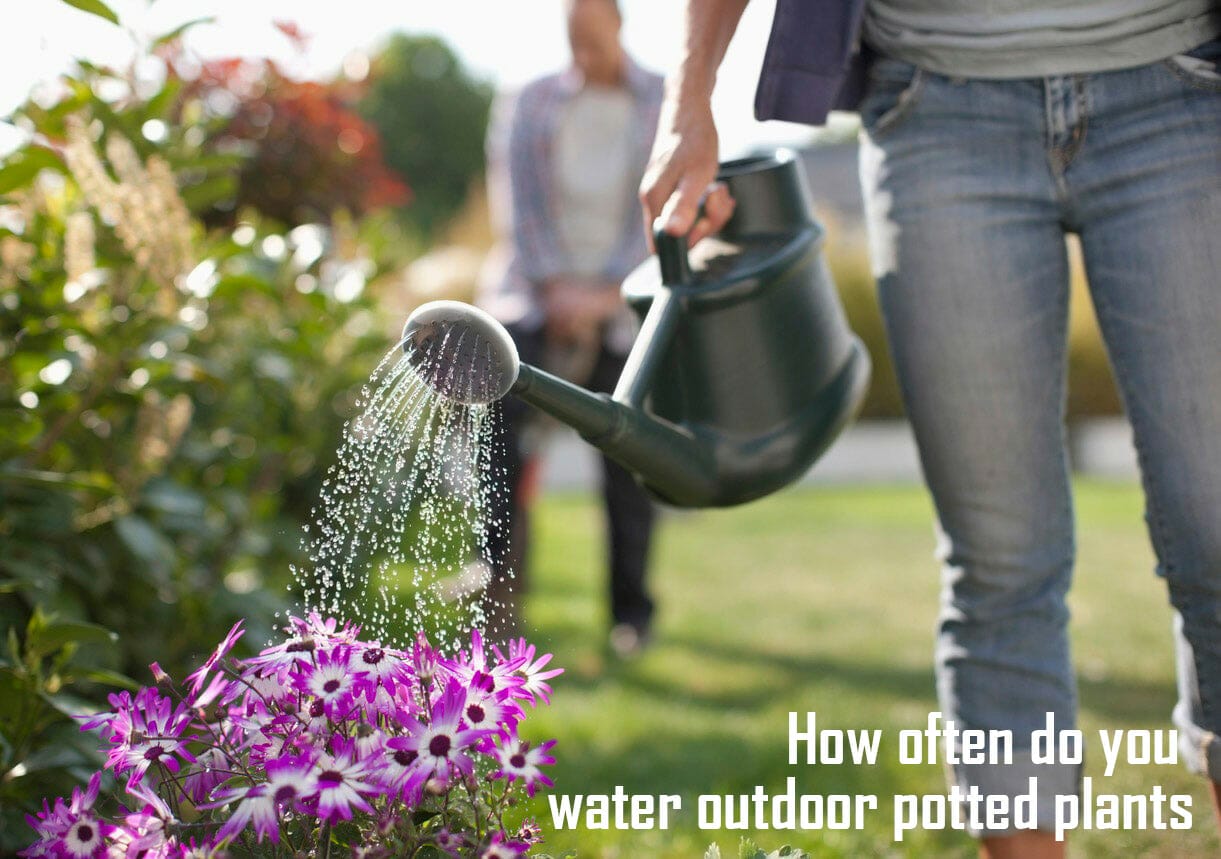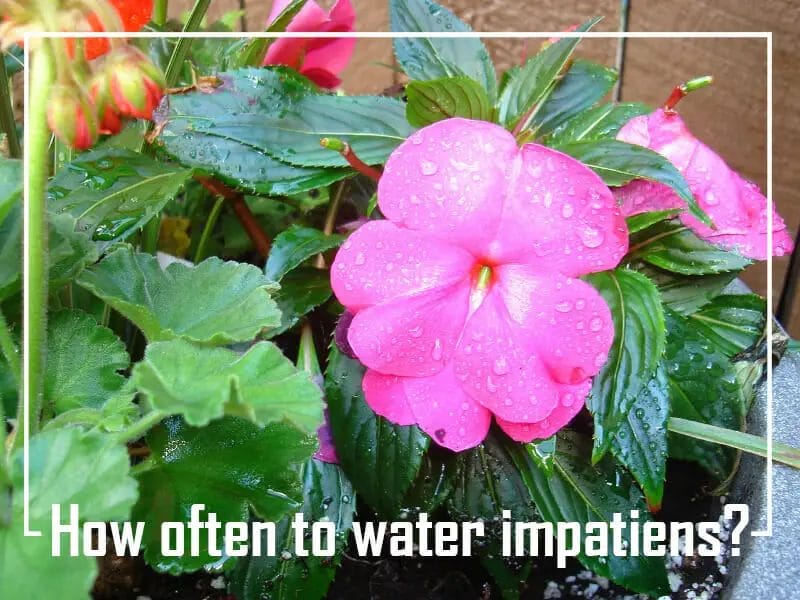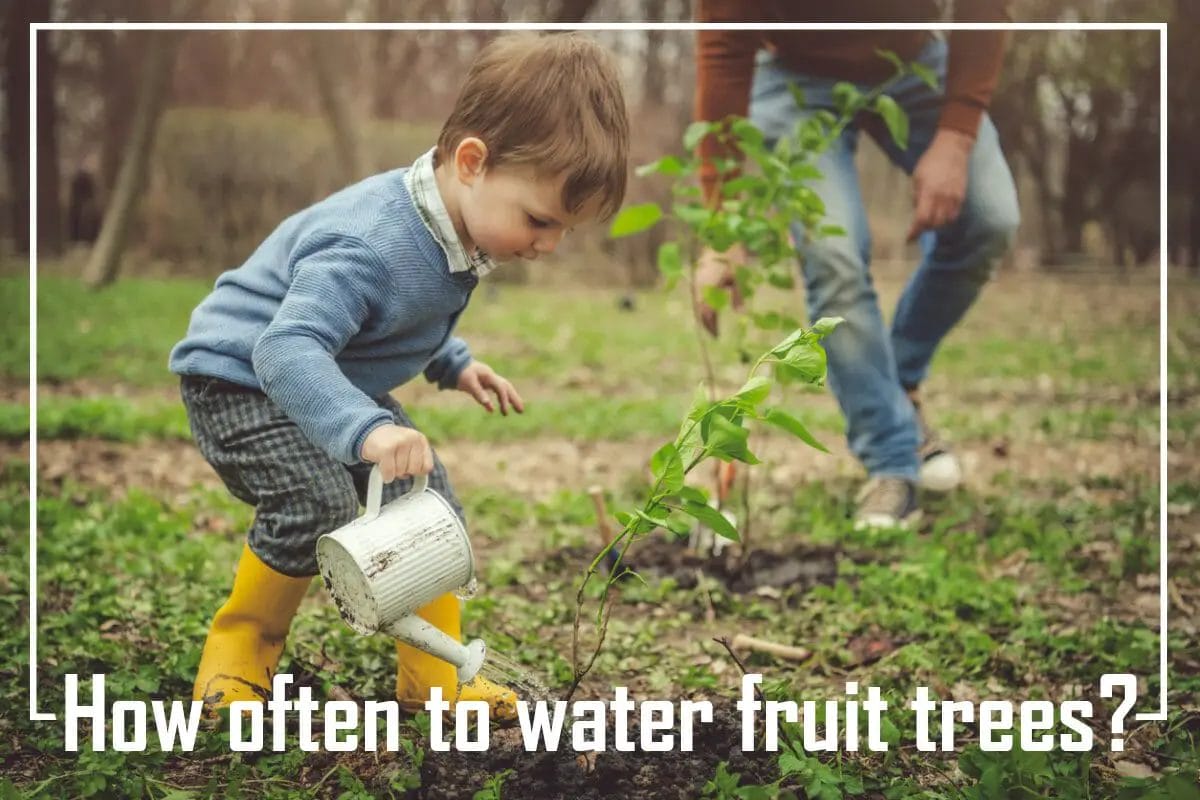In the enchanting realm of garden blooms, the hydrangea is a captivating gem, its lush clusters of petals painting landscapes with hues that evoke both serenity and vibrancy. Yet, beneath its stunning façade lies a delicate dance of care, where the rhythm of hydration plays a central role. The question often arises: How often should you water your hydrangea to orchestrate its best performance?
It is recommended to water your plant generously a few times a week instead of giving it small amounts of water every day. Ensure that you do not get water on the flowers while watering. It is best to water the plant in the morning or evening on warm days when it is “resting” and can absorb the water more effectively.
We’ll decode nature’s cues, offering insights into the signs of thirst and the delicate balance between under-watering and overindulgence. Discover the nuanced techniques to quench your hydrangea’s thirst – a choreography of timing, soil conditions, and weather fluctuations composing the growth symphony.
How often should you water your Hydrangea?
The watering frequency for hydrangeas hinges on their establishment stage and the prevailing conditions. Hydrangeas require regular hydration to foster strong roots during their initial growth phase. However, once established, their water needs shift.
For well-rooted hydrangeas, aim to water them approximately once a week. Provide about one inch of water per session, distributing it evenly around the base of the plant. Ensuring the water reaches the root zone without drenching the foliage is crucial, as damp leaves can invite fungal issues.
Hydrangeas should receive one inch of water per week for optimal growth, divided into three watering sessions. It’s important to water at the roots rather than over the top of the plant to prevent fungal disease and damage. During periods of extreme heat, you may need to water more frequently or increase the amount of water slightly.
Remember, it’s the balance between maintaining soil moisture without waterlogging that yields the best results. By keeping a close eye on your hydrangeas and monitoring the moisture levels in the soil, you’ll be able to fine-tune your watering routine and provide them with the optimal conditions for healthy growth and vibrant blooms.
Things that affect Watering Frequency
Watering frequency for plants, including hydrangeas, is influenced by various factors that collectively dictate their moisture requirements. Understanding these factors is essential for maintaining optimal hydration levels and promoting healthy growth. Here’s a detailed exploration of the features that impact watering frequency for hydrangeas:
- Plant Maturity: Young, newly planted hydrangeas require more frequent watering to establish their root systems. As they mature and develop stronger roots, their water needs decrease.
- Soil Type and Drainage: The type of soil your hydrangeas are planted in plays a significant role. Sandy soils drain quickly, necessitating more frequent watering, while clay soils retain moisture longer. Well-draining soils prevent waterlogged roots, while poor drainage demands careful monitoring.
- Weather Conditions: Temperature, humidity, and prevailing weather patterns directly affect watering frequency. Hot and dry weather increases water evaporation and plant transpiration, requiring more frequent watering. Cooler and humid conditions might reduce the need for water.
- Rainfall: Natural rainfall contributes to soil moisture levels. You might need to adjust your watering schedule or skip watering sessions during rainy periods.
- Container vs. Ground Planting: Hydrangeas in containers dry out faster than those in the ground due to limited soil volume. Container plants often require more frequent watering.
- Plant Location: Hydrangeas exposed to full sun tend to dry out quicker than those in partial shade. The intensity of sunlight and its impact on evaporation rates influence the plant’s water needs.
- Wind Exposure: Wind accelerates moisture loss from the soil and plant surfaces through evaporation and transpiration. Windy areas might necessitate more frequent watering.
- Plant Size and Density: Larger plants and densely planted hydrangea beds might create more competition for water. They may need more frequent watering to ensure each plant receives adequate moisture.
- Mulching: Applying mulch around hydrangeas helps retain soil moisture by reducing evaporation. Proper mulching can extend the time between watering sessions.
- Hydrangea Variety: Different hydrangea varieties have varying water requirements. Research your specific variety to determine its moisture preferences.
- Health and Growth Stage: Hydrangeas actively growing, flowering, or setting buds might require more water. Stressed or sick plants could also exhibit altered water needs.
- Seasonal Changes: Watering frequency may need to be adjusted according to the changing seasons. Hydrangeas generally require less water during dormant periods compared to their active growing season.
By carefully considering these factors, you can tailor your watering regimen to suit your hydrangeas’ unique needs, ensuring they receive the right amount of moisture to thrive and flourish. Regular observation and adaptation are key to maintaining optimal hydration levels and supporting the health of your plants.
You May Also Want To Learn: How Often Should You Water Ivy?
When is the best time to water Hydrangea?
The optimal time to water hydrangeas is early morning, ideally before the sun’s intensity peaks. This strategic timing allows the plant to absorb moisture and nutrients during the day, promoting healthy growth and minimizing the risk of fungal diseases. Watering in the morning also enables the foliage to dry out gradually, reducing the chances of fungal spores finding a damp environment to thrive in.
Additionally, morning watering prevents the plant from experiencing water stress during the hottest day, ensuring it remains well-hydrated and resilient. By aligning your watering routine with the morning hours, you give your hydrangeas the best chance to flourish and exhibit their vibrant blooms to the fullest extent.
The Right Way To Water Hydrangeas
The art of watering hydrangeas is a delicate dance that balances their moisture needs with the demands of their environment. To ensure these stunning blooms thrive, follow these steps for the right way to water hydrangeas:
- Know Your Hydrangea Variety: Different hydrangea varieties have varying water preferences. Research your specific type to understand its unique requirements.
- Established Hydrangeas: Once hydrangeas are established (typically after the first growing season), water deeply about once a week. Provide around one inch of water per session. Adjust the frequency based on weather conditions.
- Morning Watering: Water hydrangeas in the morning whenever possible. This allows the foliage to dry during the day, reducing the risk of fungal diseases.
- Avoid Overhead Watering: Direct water at the base of the plant, not over the top. Overhead watering can lead to wet foliage, which is more susceptible to fungal issues.
- Water at the Root Zone: Focus on the area around the plant’s root zone. This is where the roots can absorb moisture most efficiently.
- Deep Watering: Water deeply to encourage deep root growth. Shallow, frequent watering can lead to shallow root systems, making plants more vulnerable to stress.
- Mulch: Apply a layer of mulch around the base of hydrangeas. Mulch helps retain soil moisture, regulates soil temperature, and reduces evaporation.
- Check Soil Moisture: Before watering, check the soil’s moisture level a few inches below the surface. If it feels dry, it’s time to water. If it’s still moist, hold off.
- Adjust for Weather: During high heat or drought periods, hydrangeas might need more frequent watering. Conversely, reduce watering during cooler or rainy spells.
- Container Hydrangeas: Container-grown hydrangeas dry out faster than those in the ground. Monitor them closely and water when the top inch of soil feels dry.
- Winter Watering: In cold climates, water hydrangeas thoroughly before the ground freezes. This provides a moisture source for the dormant period.
- Avoid Waterlogging: While hydration is essential, avoid waterlogging the soil, which can lead to root rot. Ensure proper drainage in the planting area.
By understanding the specific needs of your hydrangeas and adapting your watering routine accordingly, you’ll help them thrive and grace your garden with their magnificent blooms. Remember, the right way to water hydrangeas combines science, observation, and a touch of horticultural finesse.
How can you tell if a Hydrangea is overwatered or underwatered?
| Indicators | Overwatered Hydrangea | Underwatered Hydrangea |
|---|---|---|
| Soil Appearance | Soil is consistently damp or waterlogged. | Soil is dry and appears cracked or pulling away from the edges. |
| Leaf Color | Leaves might appear yellow or pale green. | Leaves become wilted, starting from the tips. |
| Leaf Drooping | Leaves are drooping, often with a soft texture. | Leaves are drooping, crispy, and might feel brittle. |
| Leaf Texture | Leaves may appear swollen, with a leathery texture. | Leaves might feel papery and fragile. |
| Fungal Growth | Excess moisture can lead to fungal growth on leaves or stems. | Reduced moisture might deter fungal issues. |
| Leaf Edges | Leaves may develop brown, mushy edges due to excess water. | Leaves may become brown and crispy at the edges. |
| Plant Growth | Excessive growth but with weak stems and sparse foliage. | Stunted growth and reduced flower production. |
| Root Health | Root rot and fungal issues are more likely in consistently wet soil. | Shallow or dry soil might lead to stressed root systems. |
| Pest Attraction | Overwatering can attract pests like fungus gnats. | Reduced moisture can deter certain pests. |
| Potting Mix Condition | Potting mix in containers might have a sour odor due to excess water. | Potting mix in containers might be dry and pull away from edges. |
Note: It’s important to note that some symptoms might overlap or vary based on the severity of the condition, the hydrangea variety, and the specific environmental conditions. Regular observation, adjusting watering practices, and maintaining a balance between soil moisture and drainage are key to preventing overwatering or underwatering.
How do we recover whether Hydrangea is overwatered or underwater?
Recovering an Overwatered Hydrangea:
- Assess the Damage: Overwatering can lead to root rot and other issues. Check for signs of overwatering, such as yellowing leaves, wilting despite moist soil, or a foul smell coming from the soil.
- Improve Drainage: If the soil is consistently waterlogged, improve drainage by amending the soil with organic matter. Choose a well-draining location if possible.
- Adjust Watering: Allow the soil to dry out before watering again. Depending on the severity of overwatering, you might need to withhold watering for a longer period.
- Report if Necessary: If your hydrangea is in a container and the roots are waterlogged, consider repotting it with fresh, well-draining soil.
- Prune Affected Parts: Trim off any diseased or yellowing leaves and stems. This will help the plant focus its energy on healthy growth.
- Monitor Carefully: Keep a close eye on your hydrangea’s condition. Gradually resume a regular watering routine only when the soil feels dry to the touch.
Recovering an Underwatered Hydrangea:
- Assess the Damage: Underwatering can lead to wilting, dry leaves, and stunted growth. Check the soil moisture and the overall health of the plant.
- Water Deeply: Give the plant a thorough soaking to ensure water reaches the root zone. Water slowly to allow the soil to absorb moisture without runoff.
- Mulch: Apply a layer of mulch around the base of the plant to help retain soil moisture and prevent rapid evaporation.
- Increase Water Frequency: Depending on the severity of underwatering, you might need to increase the watering frequency. Monitor the soil moisture and adjust as needed.
- Fertilize Carefully: While it’s important to provide nutrients, avoid fertilizing when the plant is stressed. Wait until it shows signs of recovery.
- Shade during Hot Periods: If the hydrangea was underwatered during a hot period, provide some shade to reduce stress while it recovers.
- Prune Dead Growth: Trim off any dead or severely damaged leaves and stems. This encourages new growth and prevents further stress.
- Maintain Consistent Care: Once the hydrangea begins to recover, maintain a consistent watering and care routine to support its ongoing health.
Remember that patience is key when nursing a distressed hydrangea back to health. The plant might take some time to recover and regain its vitality fully. By carefully adjusting your watering habits and addressing the specific needs of your hydrangea, you can help it bounce back and thrive once again.
Also Read: How Often in Pot or Indoors?
Does Hydrangea need water in winter?
During winter, the watering needs of hydrangeas undergo a notable change. When hydrangeas go dormant in regions with cold winters, their water requirements diminish significantly. As the plants cease active growth and lose their leaves, their demand for moisture decreases. However, it’s important to strike a balance between avoiding over-watering and ensuring that the root system doesn’t dry out completely.
Providing occasional deep watering, especially before the ground freezes, can help safeguard the hydrangea’s root health if the winter season is particularly dry and devoid of precipitation. Mulching around the base of the plant can aid in moisture retention and insulation.
Ultimately, monitoring the soil moisture levels and responding to specific weather conditions is essential, as excessive winter watering can be detrimental. At the same time, sporadic hydration is beneficial for preserving the hydrangea’s overall well-being during its dormancy.
Frequently asked questions
1. What kind of soil should I use?
2. What are the signs that my Hydrangea needs more water?
3. What are the benefits of watering your Hydrangea?
4. How can I prevent overwatering my Hydrangea?
Conclusion:
In the delicate tapestry of gardening, the significance of proper watering for hydrangeas cannot be overstated. From the gentle dance of droplets on petals to the unseen drama beneath the soil, the art of hydration shapes the destiny of these captivating blooms. As we navigate the complex factors influencing watering frequency – from soil type to weather whims – a profound truth emerges: successful cultivation requires a keen understanding of the delicate balance between hydration and moderation.






